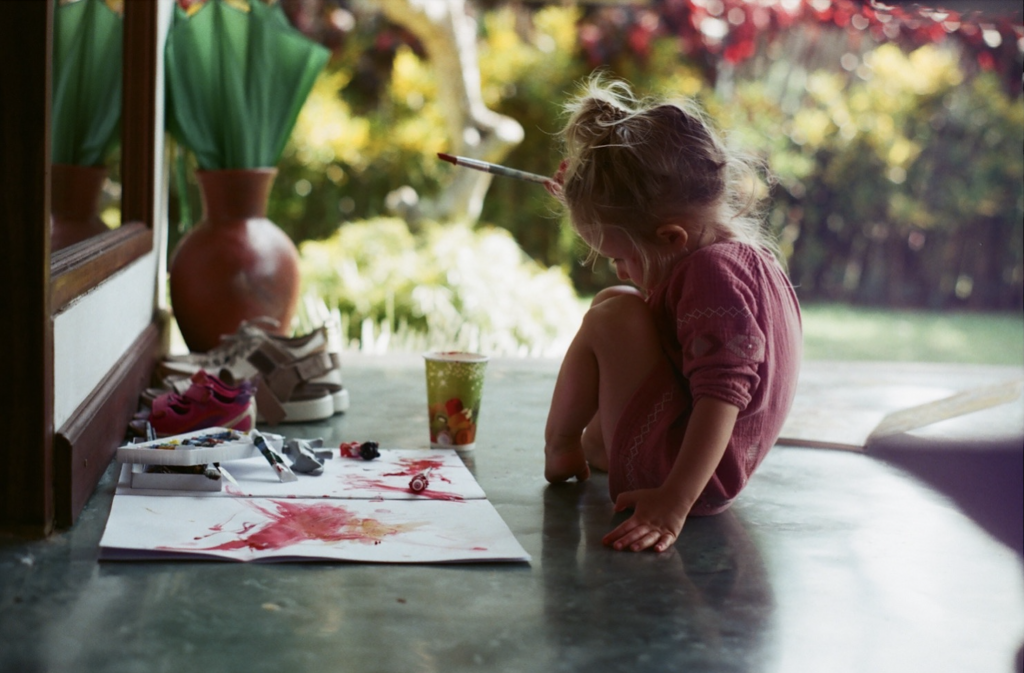Imagine that you decide to introduce your child to the beautiful things available in the art world, but you aren’t sure how to approach this task. First, get rid of the doubts that prevent you from taking a step forward.
In my time in the field of art, I have encountered three typical prejudices: art comes out of nowhere at the whim of the artist, art is boring, and art is inaccessible. I emphasize that these are prejudices.
Anticipating these possible initial doubts about the worth of studying art, here are three short explanations:
- Art is a language. It is an artistic language that can be spoken and understood. Art solves certain problems, not descends on the artist in the form of inspiration or creative impulse. First, the artist has an idea, then he translates it into the language of artistic images through technique, composition, choice of a particular art form, color, etc. To evaluate work in its entirety, it is necessary to understand how the internal (idea) is connected to the external (a work executed in some material).
For clarity, we can give an example from the history of art as it relates to the appearance of the Baroque style.
- The context: The 16th century. The Catholic Church had problems because of the Reformation.
- The task: To show the power and strength of the Catholic Church and its wealth. The task is clear. What is the solution?
- Artistic solution: A huge scale, dynamism, and impetuosity in composition and drawing, a riot of colors, the intensity of emotions and love of climaxes in the stories, the abundance of reliefs, carvings, and gold. Luxury in the flesh. Impressive? Of course, it is!
- Art is available to everyone; the question is only the depth of perception.
- The first level is basic object recognition (for example, you see that the painting shows people in a room, one of them has wings, and there is a bouquet of white lilies in a vase).
- Second level – you can identify the plot, genre, or direction, that is, you can place this work among others.
- The third level is professional – you can put the work in context. You are at least at the first level of perception of art – that is, it is available to you, too.
- Art is fun! The key is to turn learning into a game.

HOW TO STUDY ART WITH YOUR CHILD AT HOME?
First, decide what learning resources you have. The very minimum is the Internet, time, and great desire. Resources might also include art albums at home or from the library, children’s art history classes, and a nearby museum. Of course, it’s ideal if you can go to an art museum and see artworks live.
- From what period or from which artists should you start your acquaintance with the world of art?
- Choose one direction or one artist. At first, stick to your choice so you don’t get confused.
- It’s best to start with classical art (pre-twentieth century). The post-impressionists are great. And start with figurative art (depicting the world around you in a recognizable way).
- How to prepare for studying art with your child?
- Read at least a little about the era and the artist. Try to find a couple of interesting facts that will connect and remain in your child’s memory.
For example, in the world of art Alexander Benois collected a collection of children’s toys all his life and kept them scattered around the room so that the toys would be in their natural state.
- Try to find a picture of the artist, his studio, or him in the company of his friends – it’s easier for children to talk about a particular person. And that’s how artists are remembered better!
- Collect several reproductions of paintings that you look at with your child.

LET’S START STUDYING — SHALL WE PLAY ART?
- Tell your child a little about the era (Were there telephones, airplanes, televisions back then? Were there huge stores? What did people use to get around? Where did they live?) You can draw on your own knowledge. You can begin your stories about artists of the early 20th century with the words: “In a time when there were no TVs, smartphones, tablets, and chewing gum when the first cars appeared and light bulbs were a rarity, there lived an artist…”. For a child, this artist has become almost an epic character — and with stories, it’s always interesting!
- Show your child a picture of the artist, his studio, or his friends. Discuss the artist’s appearance (Do people dress like this now? What kind of character do you think he had?). Ask the child a question so that he can reincarnate as the artist for a moment (Show the gait of this artist. How did he show off in front of the mirror wearing that hat? What was the artist’s voice like?)
- After that, it’s time to get acquainted with the works.
THE BASIC PRINCIPLE
We start the discussion with what was done, then how it was done, and in the end, we try to understand why it was done this way. That is, through simple analysis, we try to guess how the artist’s idea is related to specific techniques.
A SAMPLE OUTLINE FOR DISCUSSING THE WORK
WHAT:
- What do you see? (e.g., people, things, nature, etc.)
- What’s going on? (e.g., people running, eating, etc.)
- Have you seen other similar works? (e.g., have you seen other still lifes). Ask additional questions for the child to fantasize about the theme of the piece. For example, such as: What happened before or after the event depicted in the painting? Whose breakfast is this? Whose room is this? Where is that in nature?
HOW (about the artist’s technique):
- Nice/ugly
- Similar / not similar
- Calm or dynamic
- What lines (straight, sharp, elastic, etc.)
- Are there many different colors?
- Are the smears visible?
- Painting with deep space or does it seem flat?
- What is the mood in the picture? (gloomy, sublime, joyful, etc.)
Finally, let’s move on to dessert! It’s time to play art and remember what we’ve seen.

EXAMPLES OF ART GAMES
- Mosaic
Print the artwork and cut it into squares. Mix them up. You need to assemble a picture on the principle of an ordinary mosaic. You can race against each other.
- Guessing game
Print out 8-10 pictures of works of art and write an art dictation. Show the child the picture for 3-5 seconds. He must write the name of the work. You can have a competition among the children. Whoever gives the most correct answers wins.
- Drawing from Memory
This task can be turned into a competition for children. Show a picture for about 10 seconds. Hide it. Discuss who remembered what. Everyone tries to draw the composition of the picture from memory. Whoever remembers the most, whoever has the most similarities, wins.
- Reincarnations
Ask a child to repeat the poses of the characters.
How and what do the characters talk about?
What is the gait of the characters?
Author’s bio: Jean Hartley is an essay writer for several educational services. She has extensive experience in professional assistance and paper writing. Jean loves teaching children and is happy to share one of her favorite topics.


